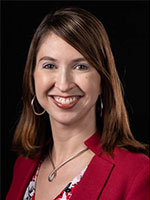Article:
Gender Bias in Collaborative Medical Decision Making: Emergent Evidence
Helzer, Erik G. PhD; Myers, Christopher G. PhD; Fahim, Christine PhD; Sutcliffe, Kathleen M. PhD; Abernathy, James H. MD, MPH
Summary:
This study examines gender bias in collaborative decision making. Two hundred eighty-three anesthesiologists read a clinical vignette that included advice given by either a nurse or physician who was a man or a woman and was experienced or inexperienced. They then indicated their treatment decision and degree of reliance on the advice provided in the vignette. The findings suggest that there is a gender bias in collaborative decision making. Participants’ reliance on the advice of nurses was not dependent on the nurse’s gender or level of experience. However, when advice was given by an inexperienced physician, participants relied more heavily on the advice of a man than a woman. Additionally, how much a participant relied on the advice of a female physician was dependent on her level of experience, which was not seen with male physicians.
Interview:
GW: What prompted you to study this important topic? Why did you decide to pursue this research?
JHA: Our team of organizational psychologists and anesthesiologists are interested in understanding how we make decisions. It started with a conversation about the complex decisions that anesthesiologists make in the operating room. They assimilate a lot of information from many sources and make quick decisions. In discussing how we could approach this complex subject, we began to talk about biases. We think (know) they exist but how might we understand them? Where do they show up? We devised a scenario where we thought biases in decision making might be elucidated and understood.
GW: While you did find that gender bias was observed when the advice was given by a physician, this was not noted when the advice was given by a nurse. Why do you think that is? Are there other studies showing that gender bias is more prominent across different expertise levels?
JHA: It is really interesting, isn’t it? I don’t think our data explains why – therefore, I can only guess. Our perceptions of the role of doctor and nurse are so very wrapped up in gender. The most interesting story in our data is that of the female doctor. The young, female doctor’s advice is relied upon less than a nurse. Thankfully, the experienced female doctor’s advice is statistically equal to that of an experienced, male doctor. Experience matters; gender should not.
GW: 80% of the surveyed anesthesiologists were male. Do you believe that played a role in the observed gender bias?
JHA: One can imagine that because 80% of respondents were male, that influenced the results. However, that does reflect a bit of reality, right? There are a lot of male cardiac anesthesiologists – an imbalance we are actively working to correct. Groups like the WICTA SIG – Women in Cardiothoracic Anesthesiology Special Interest Group – are doing amazing work providing a forum through which women can foster each other’s professional and personal development in the field.
GW: You reported that unlike with male physicians, reliance on a female physician’s advice was a function of her experience. How might this affect the experiences of female trainees? Is there research evaluating the effect of gender bias on career trajectory?
JHA: I suspect gender influences female physicians’ training in many ways that, as a male, I will never understand. We have all heard the sad but common stories from our female physician colleagues about the time(s) they have been mistaken for a female nurse. This is all too common in the peri-operative space where there is no distinguishing clothing for physicians – we are all dressed in the same terribly colored and horribly styled scrubs. These baked-in perceptions color the interactions our trainees have with their patients. As attendings, we can help. In my world, I can always introduce female trainees as “Doctor”, reinforcing to the patient that she is a well-trained, committed physician. Admittedly, I am not an expert in the effect of gender on education and career advancement and hesitate to comment further.
GW: Your study described a notable gender bias in collaborative decision making. What steps should institutions and individuals be taking to overcome this bias?
JHA: This our collective next step, both as a research team and as society. Once we have identified these biases, how do we combat them? Education is certainly a part of it. Simply proving to a cohort of mostly male, older anesthesiologists that they listen to advice delivered by different genders differently might help. We hope so, at least. The next step is understanding which interventions might work. This is a very exciting space where we need help. Who wants to join us in figuring this out?
Blog Post Author

Gretchen Winter, MD is an Assistant Professor of Medicine at the University of Alabama at Birmingham. She graduated medical school at Baylor College of Medicine, followed by a combined residency in Internal Medicine and Pediatrics at Indiana University, and a fellowship in Pulmonary and Critical Care Medicine at the Cleveland Clinic. Her clinical interests include bronchiectasis and critical care, and her research interests include medical education, patient-physician communication, and physician wellness. She is passionate about nature and fitness and has more pets than are socially acceptable.
Twitter: @gretchemaben
Article Author

James (Jake) H Abernathy, III, MD, MPH is an Associate Professor and Division Chief of Cardiac Anesthesiology at Johns Hopkins. After completing medical school at the University of Alabama at Birmingham, he did a residency in Anesthesiology and a fellowship in Cardiac Anesthesiology at the Brigham and Women’s Hospital in Boston, MA. Dr Abernathy has a long history of collaborating with human factors engineers, healthcare architects and sociologists to better understand how to improve the delivery of clinical care. Two notable projects include RIPCHORD, investigating the impact of OR space and design on human error, and OR-SMART which seeks to understand the anesthesia medication delivery system – both projects are currently funded by AHRQ. Additionally, he serves the Society of Cardiovascular Anesthesiologists as a member of the Board of Directors and the American Society of Anesthesiologists on the Committee for Performance and Outcome Metrics and the Society of Cardiovascular Anesthesiologists.



